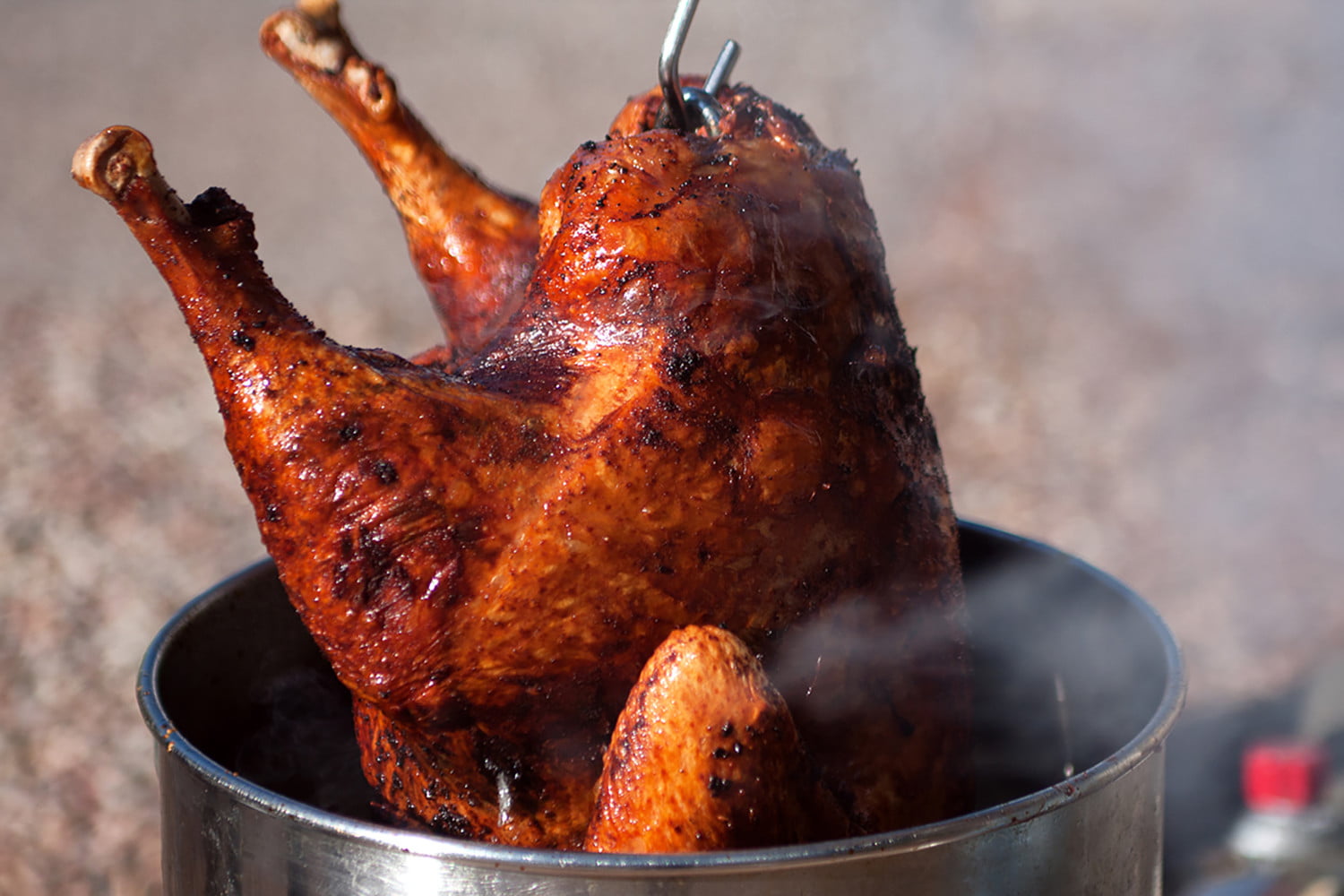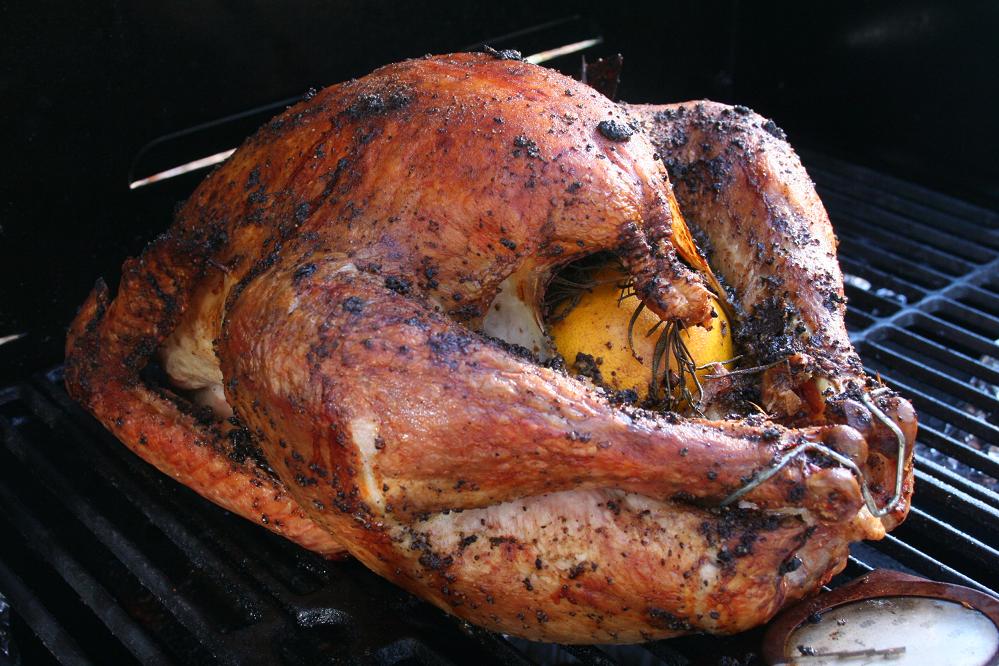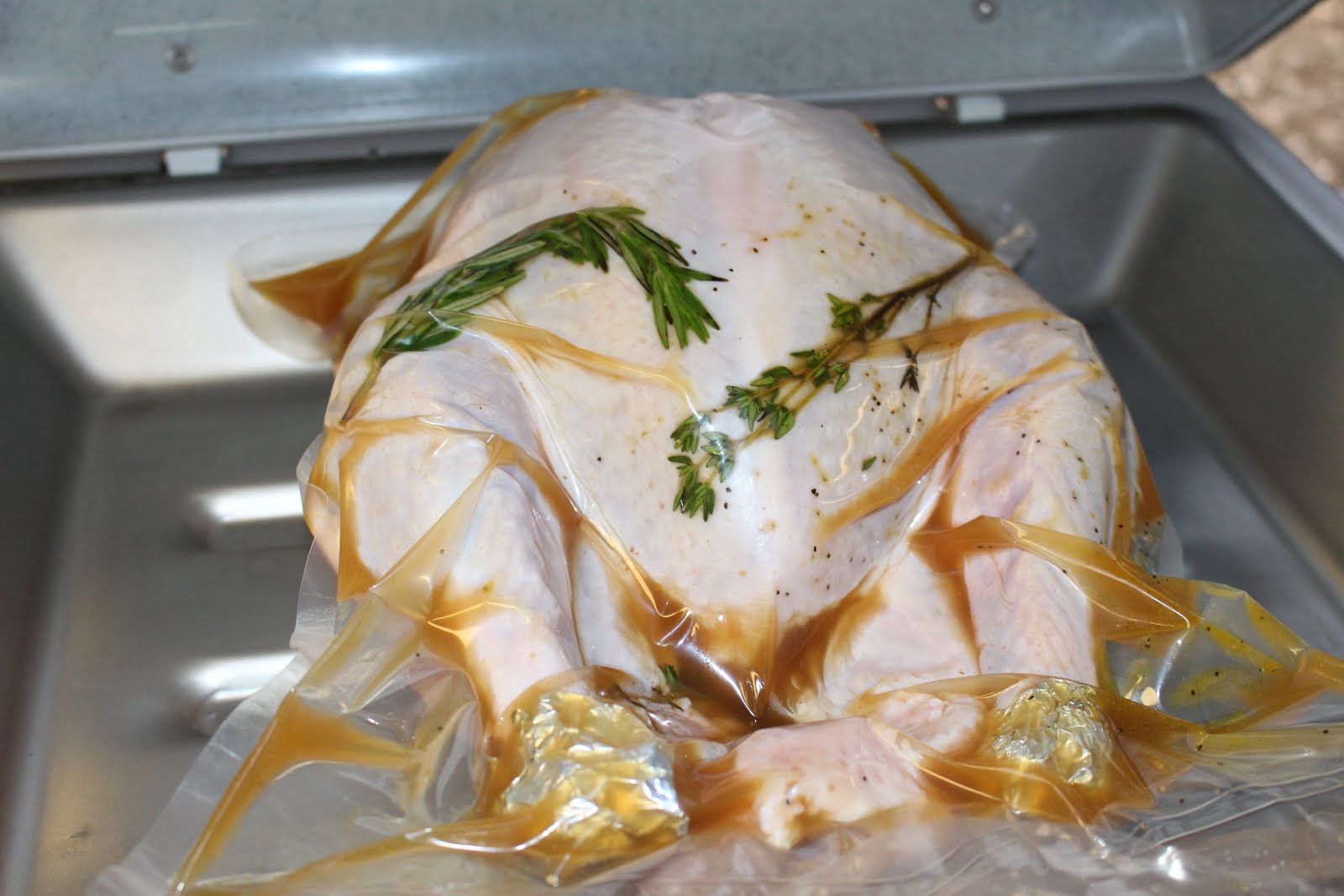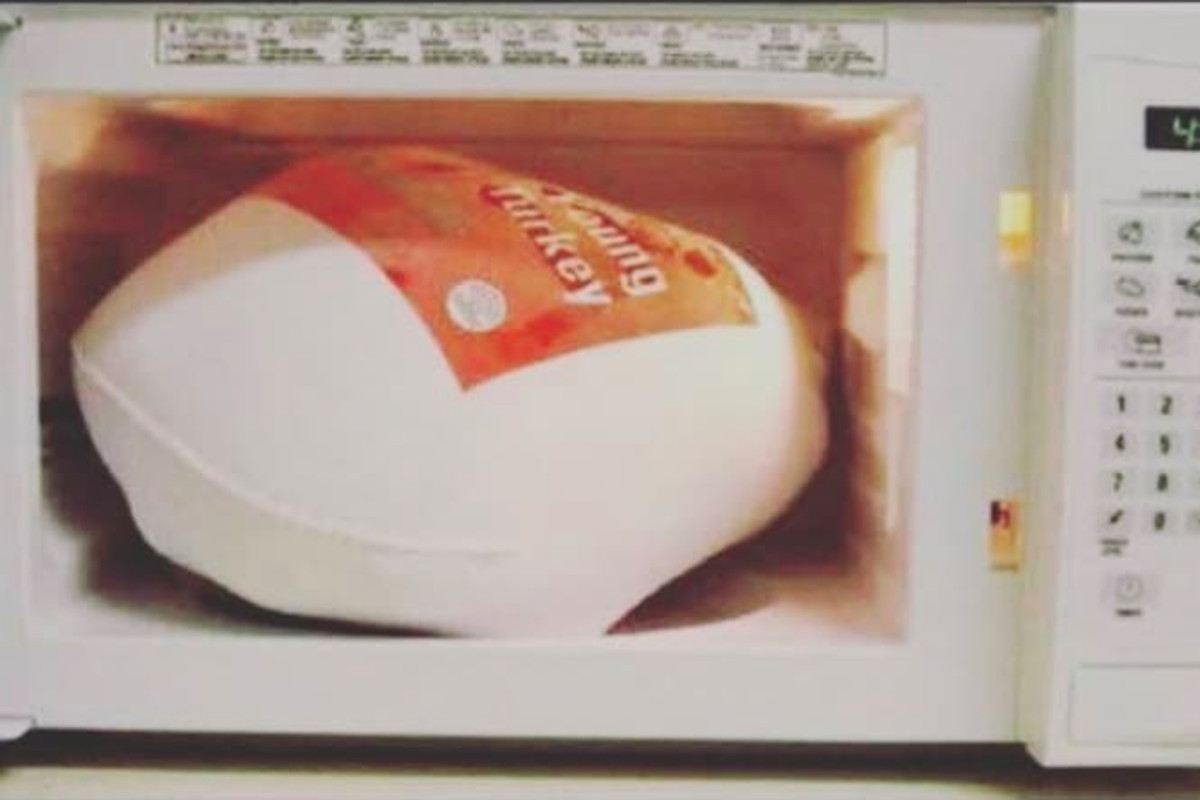The Oven Isn't The Only Place For A Turkey: Seven Alternatives You Might Not Have Considered.
It is without a doubt a different sort of holiday time this year for the communities of Burnaby, Coquitlam, and the Lower Mainland, BC (and all over Canada). For those of us who rely on tradition to stay grounded and hopeful, it is fair to say that turkey is probably the most celebrated bird in North America when it comes to the holidays.
Oven roasting is the most popular method used to cook a whole turkey. And what's not to love about that? It's easy and straightforward and yields delicious results. But whether you're having turkey for the holidays, for Thanksgiving, or just for the sake of it, here are some interesting alternatives to consider for cooking it if you don't have an oven, are looking to give your oven a break, or just want to try something new.
1. Deep Fryer
Deep-fried turkey could be likened to deep-fried chicken - which is essentially a Southern US tradition, although the origin of fried chicken in the southern states of America has been traced to precedents in Scottish and West African cuisine. Scottish fried chicken was cooked in fat (though unseasoned) while West African fried chicken was seasoned (but battered and cooked in palm oil). And it's so delicious that you might just find it worthwhile as a one-off meal.
However, the actual deep frying of a turkey is no easy task, and it does require a lot of caution and thought beforehand. Yet, deep frying is a simple method for cooking that produces lots of flavors. Where oven-cooking can run the risk of drying out your meat around the outside (while taking extremely long time to cook the interior meat nearest the bones), deep frying keeps all of the meat moist and juicy while taking only a fraction of the time that roasting does.
Important to remember, smaller birds work best for frying. The turkey should be no larger than 12 pounds, or you can fry parts instead, such as breasts, wings or legs. Ensure that your bird is completely thawed, dry (pat dry with paper towels) and not stuffed. Important to note here is that submerging a frozen bird into hot oil would be extremely dangerous and is a huge no-no!
When working with large amounts of hot oil, it is important to select a cooking vessel large enough to completely submerge the turkey without it spilling over. The oil should cover the turkey by 1 to 2 inches. Select a safe location OUTDOORS for deep fat frying a turkey. Heat the cooking oil to 350F. Very slowly and carefully, lower the turkey into the hot oil. Monitor the temperature of the oil with a thermometer during cooking. Never leave the hot oil unattended.

Deep frying oil can reach temperatures of over 400F. When cooking at this temperature, extreme safety measures should be taken to prevent burning oneself or starting a fire. Like other oils, cooking oil is a highly flammable liquid. To prevent flare-ups and house fires, avoid letting oil contact direct flames. Because of this hazard, it is highly recommended to have a kitchen fire extinguisher available when deep-frying and be in the know about grease fires.
It will take about 3 to 5 minutes of cook time per pound. So, a 12-pound bird will take about 36 minutes to an hour to cook. When reaching the approximate time needed, check to see if the turkey is safely cooked by removing the turkey from the oil, draining the oil from the cavity and with a food thermometer, check the internal temperature of the bird. But not while the turkey is submerged in oil When the turkey reaches a minimum internal temperature of 165F in the innermost part of the thigh and wing and the thickest part of the breast, it is done. If the turkey has not reached 165F in all three locations, then return it to the hot oil for additional cooking.
Once it reaches 165F, carefully remove it from the oil and place it on a sturdy tray lined with a metal rack or paper towels. The skin can range in color from golden to dark brown to almost black. Let it rest about 20 minutes before carving, to let the juices set. This will result in a moist, flavorful bird.
2. Slow Cooker Making Thanksgiving turkey with a slow cooker is more common than you think. You just have to make sure your slow cooker is big enough to fit the bird. Normally, one smaller than ten pounds is ideal. Cook the turkey on low for six to eight hours, or until the internal temperature reaches 165°F. If your slow cooker isn't big enough, you can also chop it into smaller portions to fit into the slow cooker. The one disadvantage with cooking a turkey with a slow cooker is that the skin won't be broiled to a nice crisp.
3. BBQ Perhaps the center of every Australian celebration over the holidays is the BBQ. Rather than having a traditional sit-down, formal dinner (which some people still do), a BBQ is the semi-casual, outdoorsy way to celebrate in Australia. However, cooking the turkey on the BBQ is also something which has been gaining popularity in other parts of the world - as it helps to keep it succulent but the skin crisp, plus gives more space in the oven for all the trimmings.

If the weather works out, why not open your outdoor kitchen and pull out your barbecue equipment? This method will provide the closest result to an oven-roasted turkey, and it's much less hassle than it sounds. Simply place your turkey in a roasting pan on your grill with the lid down and cook for about 1.5 hours for a ten pounder. This method works better without any stuffing to ensure that the meat is cooked thoroughly.
Barbecuing a turkey calls for indirect heat - which is very different to grilling a steak over hot coals. Use foil to deflect the heat if necessary. Be sure to remove the thighs and legs and cook them separately as the dark meat benefits from longer, slower cooking. Cooking both at the same time means the white breast meat will overcook before the thighs and legs - which can cause a dryer turkey! If you are planning a smaller gathering this year, opt for the turkey crown - which will cook beautifully too. Air Fried Deep-fried turkey is amazing BUT it's pretty fattening (if you're watching your fat intake) and is also a major cause of house fires, explosions, and subsequent ER visits over the Holidays!
Luckily, the air fryer is a healthier and safer alternative and produces the same tender, fall-apart meat and crispy skin that you would get with oil frying.
It's important to remember that your average countertop air fryer won't be able to handle this job. You'll need one that's made specifically for big birds. However, Most small turkeys can cook in a larger air fryer as quickly as 10 minutes per pound, with the same prep work detailed above for a roasted turkey.
The only downside here is that air frying won't work as well if you plan to stuff your turkey.
To make enough turkey for just your household, place an oiled and seasoned turkey breast in your pre-heated air fryer skin-side down for 25 minutes. Then, turn it over to finish and brown.
4. Sous-Vide Think you have the expertise to sous-vide an entire turkey? It's a feat worth putting on your culinary resume, that's for sure. You'll need a smaller bird and a large sous-vide bag. Start by making a jus with herbs, onions, celery, carrots, and chicken stock, then place the turkey in the sous-vide bag before emptying the jus into the cavity of the bird. Vacuum seal the bag and place into the water bath for 1 hour at 185℉ then cook for 5 more hours at 170℉ for a ten-pounder. You'll be left with a delicious stock that you can set aside to make gravy later on, and a fully cooked turkey!

5. Smoked If you haven't tried smoking a turkey, then perhaps this is the year to do so! But it takes a bit of planning. Smoking your turkey (and brining it beforehand) infuses the bird with sweet and smoky flavors, helps keep the meat juicy. You don't actually need a smoker in order to make smoked turkey. You can convert your outdoor grill into a smoker. Wood pellet grills, which combine the functions of a grill, smoker and oven, are also a popular choice. In that category, Traeger pellet grills and Green Mountain pellet grills are well-known options.
Of course, you can certainly smoke a turkey in a smoker. Like grills, smokers can run on charcoal, gas or wood pellets - and there are also electric smokers. With so many different options, consider these things before buying a smoker.
6. Poached Poaching is not very common but one this is one method that has flavourful results and great to do if you have a lot of time on your hands. Obviously, to do this you will need a massively large pot, but it's totally doable. Place your turkey in the pot and add cold water until it entirely covers the bird. Bring to a boil over medium heat before cooking it on low heat. At this point, you can add your usual stock ingredients like carrots, celery, onion, and herbs. The general cooking guideline is twenty minutes for every pound of meat. Not only will your turkey be tender and juicy, you'll be left with an amazing pot of rich broth - perhaps best if you plan on converting this to a tasty stew!
7. Microwaved Though the whole microwaving a turkey concept first began as a prank a few years back, it turns out you can, indeed, microwave a turkey - but only one that fits - like a 12 pounder. If you used a 25 pound turkey you might run a high risk of having an undercooked turkey.
Place your turkey into the microwave, making sure that it does not touch the top or sides. Cook it on 50 percent power for about 10 minutes per each pound. It's important to note that all microwaves are different, so it's best to consult your microwave manufacturer's manual if possible.
If your microwave doesn't automatically spin, you'll need to manually rotate the turkey every 15 minutes. Be careful with handling - it will get extremely hot.
Carefully remove your turkey and check its internal temperature with a meat thermometer. Turkeys should be cooked at 165 degrees fahrenheit before consuming. You can also tell it's done when you cut into it and the juices run clear, not pink.

Just because you can cook a turkey in the microwave doesn't mean you should. The skin won't crisp, the drippings will cause a mess, and you're running more of a risk that it won't cook evenly. Chances are, you only cook a turkey once or twice a year. It's worth it to do it properly.
So as you can see, there are lots of options for cooking turkey that don't involve a traditional oven. However you are cooking yours this year, stay safe, follow fire safety precautions, maintain good social distancing, and most of all, enjoy your delicious turkey!